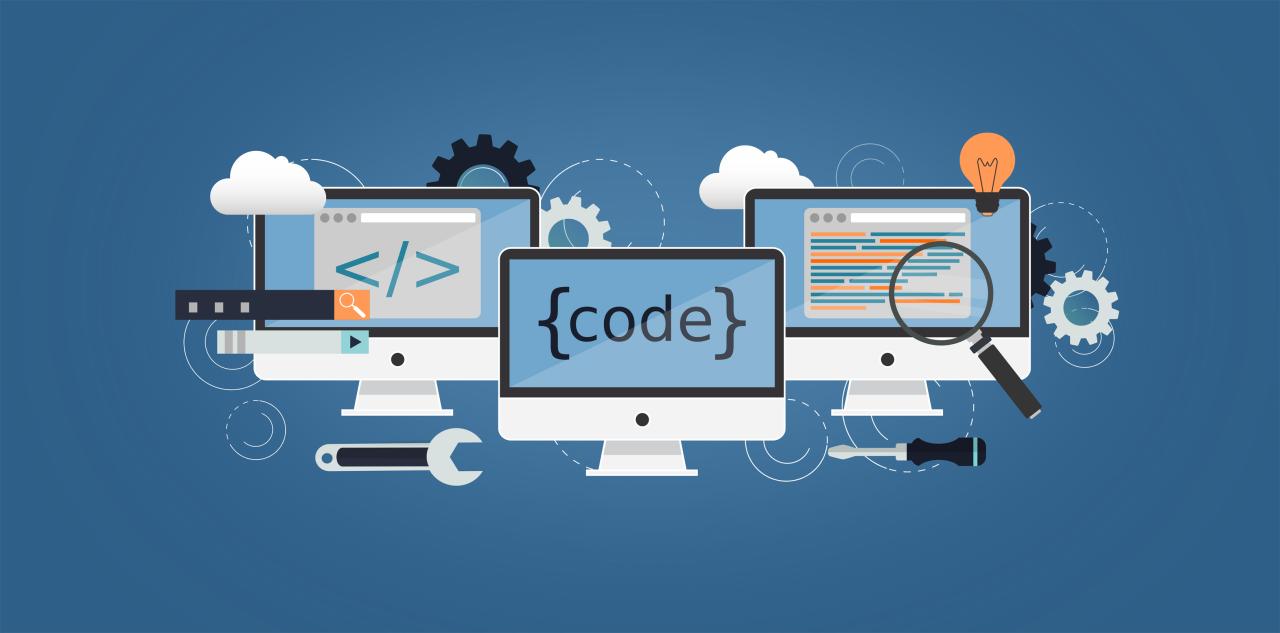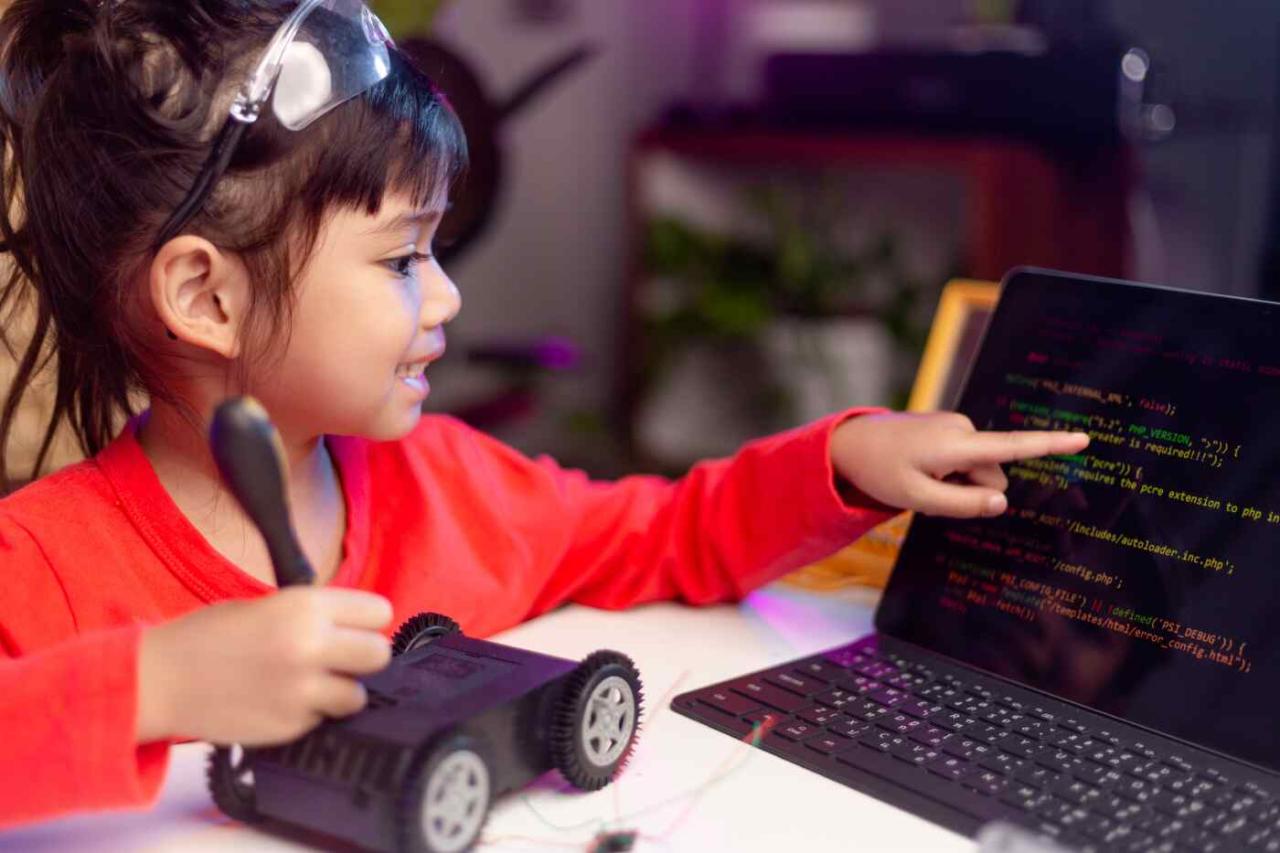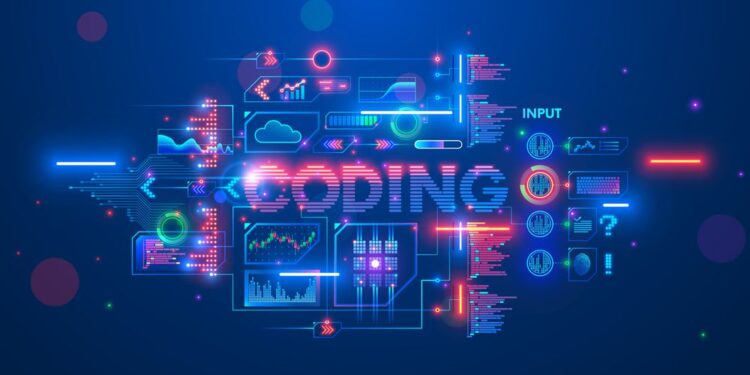In a world increasingly orchestrated by algorithms and digital interfaces, the ability to understand and create with code has become a foundational skill. Far beyond a niche interest, coding for kids is emerging as a powerful force, igniting an innovation drive that promises to shape the very fabric of our future. Equipping young minds with computational thinking and programming skills isn’t just about preparing them for tech jobs; it’s about fostering problem-solving abilities, logical reasoning, and boundless creativity. Understanding the transformative impact of early coding education, its benefits, and the landscape of opportunities it unlocks is crucial for parents, educators, and anyone invested in nurturing the next generation of digital architects and problem-solvers.
The New Language of Tomorrow

Just as literacy and numeracy were fundamental skills for the industrial age, computational literacy – the ability to read, write, and understand code – is becoming indispensable for the digital age. For children growing up today, coding is not just a subject; it’s a new form of expression and a powerful tool for creation.
A. Why Coding is More Than Just a Skill
The value of coding extends far beyond the technical act of writing lines of text. It cultivates a unique set of cognitive abilities and a mindset essential for navigating complex challenges.
- Computational Thinking: This is the core benefit. It involves breaking down complex problems into smaller, manageable parts (decomposition), recognizing patterns, abstracting details to focus on important information, and designing step-by-step solutions (algorithms). These skills are transferable to any field, from science and engineering to art and everyday problem-solving.
- Logical Reasoning: Coding demands precise, sequential thinking. Kids learn cause and effect, how to identify errors (debugging), and how to anticipate outcomes, strengthening their logical reasoning capabilities.
- Problem-Solving: Every coding challenge is a problem to solve. Children learn to approach issues systematically, experiment with solutions, and persist through failure, building resilience.
- Creativity and Innovation: Coding provides a powerful medium for creative expression. Kids can build games, design animations, create interactive stories, or develop apps that bring their ideas to life, fostering boundless innovation.
- Empowerment and Agency: Understanding how technology works demystifies it. Kids realize they are not just consumers of technology but can be creators, gaining a sense of agency and control over their digital world.
- Preparation for a Digital World: In a world increasingly driven by software, understanding code offers a profound advantage. It’s the language of the future workforce, regardless of the specific industry.
B. The Evolution of Coding Education for Kids
What was once a niche pursuit for computer science enthusiasts has become widely accessible, thanks to innovative tools and pedagogical approaches.
- From Text-Based to Visual Languages: Early coding required complex syntax. Today, visual block-based programming languages like Scratch (developed by MIT) allow young children to drag and drop code blocks to create programs, making coding concepts intuitive and fun without needing to type complex commands.
- Gamified Learning Platforms: Many platforms integrate coding education into game-like environments (e.g., Code.org, Tynker, Code Combat), making the learning process engaging and motivating through challenges, puzzles, and interactive narratives.
- Robotics and Physical Computing: Integrating coding with tangible objects like LEGO Mindstorms, Micro:bit, or Arduino allows kids to see the immediate physical results of their code, making abstract concepts concrete and exciting.
- Online Communities and Resources: A wealth of free and affordable online tutorials, courses, YouTube channels, and vibrant coding communities provide endless learning opportunities and support for young coders.
- Formal Education Integration: Growing numbers of schools worldwide are integrating coding and computational thinking into their primary and secondary curricula, recognizing its fundamental importance.
The Ripple Effect
The impact of early coding education extends far beyond technical proficiency, creating a ripple effect that touches academic performance, career readiness, and personal development.
A. Academic Advantages
Coding fosters skills that significantly enhance performance across various academic subjects.
- Mathematics: Coding reinforces mathematical concepts such as logic, sequences, variables, and functions. Debugging code is akin to solving a complex math problem.
- Science: It enables students to model scientific phenomena, analyze data, and simulate experiments, bringing scientific principles to life in an interactive way.
- Literacy and Storytelling: Creating interactive stories or animations requires strong narrative skills, character development, and logical sequencing, improving literacy and communication.
- Problem-Solving Across Disciplines: The systematic approach to problem-solving learned in coding translates directly to tackling challenges in any subject, from history essays to complex physics problems.
- Persistence and Resilience: Debugging code is often frustrating. Kids learn to try, fail, analyze, and try again, building resilience and a growth mindset that benefits all academic endeavors.
B. Career Readiness in the Digital Age
Equipping kids with coding skills is directly preparing them for the jobs of tomorrow, many of which don’t even exist yet but will undoubtedly have a digital core.
- Direct Entry into Tech Roles: A strong coding foundation can lead directly to careers in software development, data science, cybersecurity, web development, game design, and AI engineering.
- Enhanced Employability Across Industries: As every industry undergoes digital transformation, professionals in fields like healthcare, finance, marketing, and manufacturing will increasingly need to understand and interact with technology, making digital literacy and basic coding skills highly valuable.
- Entrepreneurial Spirit: Coding empowers young people to turn their ideas into tangible products or services, fostering an entrepreneurial mindset and providing the tools to launch their own digital ventures.
- Adaptability to Change: Learning to code teaches the fundamental skill of learning new technologies. In a rapidly evolving job market, this adaptability is arguably the most critical long-term asset.
- Higher Earning Potential: Jobs requiring coding and advanced digital skills consistently command higher salaries compared to roles with less technological focus.
C. Personal Growth and Social Impact
Coding also contributes significantly to a child’s personal development and their ability to positively impact the world.
- Boosted Confidence: Successfully creating a game, an animation, or a simple app provides a huge sense of accomplishment and boosts self-confidence.
- Patience and Attention to Detail: Coding demands meticulous attention to detail and patience, as even a small error can break an entire program.
- Collaboration Skills: Many coding projects and learning environments encourage collaboration, teaching kids to work in teams, share ideas, and contribute to larger projects.
- Critical Media Consumption: Understanding how digital products are built can help kids become more critical consumers of technology, aware of algorithms, privacy implications, and design choices.
- Social Impact: Coding can be used to solve real-world problems, from creating apps that help their community to building tools for social good, fostering a sense of civic responsibility and empowering them to be agents of change.
The Landscape of Coding Education

The accessibility of coding for kids has exploded, with diverse resources catering to different ages, learning styles, and levels of engagement.
A. Online Platforms and Free Resources
The internet is a treasure trove of accessible coding education, often at no cost.
- Block-Based Learning:A. Scratch (MIT Media Lab): A foundational visual programming language for ages 8+, enabling creation of interactive stories, games, and animations. It’s incredibly intuitive and widely used globally.B. Blockly (Google): A visual programming editor that uses interlocking graphical blocks to represent code, often used as a backend for other educational coding platforms.C. ScratchJr (MIT Media Lab): A simplified version of Scratch for ages 5-7, designed for tablets, introducing even younger children to programming concepts.
- Gamified Learning:A. Code.org: Offers a vast array of free courses, Hour of Code tutorials, and challenges for all ages, often featuring popular characters to engage learners.B. Tynker: Provides a comprehensive curriculum with hundreds of coding activities, games, and challenges for kids of all ages, progressing from block coding to text-based languages.C. Code Combat: A multiplayer programming game that teaches Python and JavaScript fundamentals by having players write code to control heroes and solve challenges.
- Text-Based Introduction:A. Python for Kids: Python is often recommended as a first text-based language due to its relatively simple syntax and wide applicability. Online tutorials and books abound.B. JavaScript for Web Development: For those interested in web creation, JavaScript is a powerful and accessible language.
- YouTube Tutorials: Countless YouTube channels offer free, engaging coding lessons for kids, often focused on specific projects like building a game in Scratch or a simple website.
B. Offline Programs and Physical Computing
Complementing online resources, in-person classes and tangible coding tools offer unique learning experiences.
- Coding Camps and Workshops: Summer camps and weekend workshops provide immersive, hands-on coding experiences, often focusing on specific projects like game design, robotics, or app development.
- Robotics Kits:A. LEGO Mindstorms/SPIKE Prime: Combine LEGO building with robotics and coding, allowing kids to design, build, and program robots.B. Micro:bit: A small, programmable computer board designed to teach kids coding and electronics.C. Arduino/Raspberry Pi: More advanced options for older kids interested in physical computing, electronics, and DIY projects.
- Coding Schools and Academies: Dedicated after-school programs offer structured curricula and expert instruction, often leading to more advanced coding skills.
- School Curricula: A growing number of elementary and secondary schools are integrating computer science and coding into their standard academic offerings.
Challenges and Best Practices
While the opportunities are vast, guiding kids through their coding journey also presents specific challenges that require thoughtful approaches from parents and educators.
A. Potential Pitfalls and How to Address Them
Ensuring a positive and productive coding experience involves being aware of potential downsides.
- Frustration and Debugging: Coding inevitably involves errors (bugs). Kids can get frustrated.A. Solution: Emphasize that debugging is a normal and essential part of coding. Celebrate finding errors as learning opportunities. Encourage a growth mindset.
- Screen Time Management: Coding involves screen time. Excessive, unsupervised screen time can be detrimental.A. Solution: Balance coding with other activities – physical play, reading, social interaction. Set clear screen time limits and ensure breaks. Focus on active vs. passive screen time.
- Maintaining Engagement: Some kids might lose interest if projects become too difficult or repetitive.A. Solution: Keep learning fun and project-based. Let kids choose topics they are passionate about (e.g., if they like games, build a game; if they like stories, create an interactive story).
- Over-reliance on Copy-Pasting: Kids might copy code without understanding it.A. Solution: Encourage understanding over mere memorization. Ask “why” questions (“Why did you choose this block? What does this line of code do?”).
- Lack of Structure: With so many free resources, it can be hard to find a cohesive learning path.A. Solution: Start with structured platforms (like Code.org or Tynker) that offer progressive lessons before moving to more open-ended projects.
B. Best Practices for Parents and Educators
Guiding children effectively requires more than just providing tools.
- Start Early, Keep it Playful: Introduce coding concepts through games and play, even before formal coding. Think about logic puzzles, sequence games, or even board games that involve strategic thinking.
- Emphasize Concepts, Not Just Syntax: Focus on computational thinking principles (sequencing, loops, conditionals, variables) rather than just memorizing specific commands in a language.
- Follow Their Interests: If a child loves games, introduce them to game development platforms. If they love stories, explore interactive storytelling through code. Passion is a huge motivator.
- Encourage Collaboration: Coding can be a social activity. Encourage kids to work on projects with friends or participate in online coding communities (with supervision).
- Celebrate Small Wins: Acknowledge and celebrate every successful step, no matter how small, to build confidence and reinforce positive associations with coding.
- Be a Learner Yourself: Parents and educators don’t need to be coding experts. Learning alongside the child or showing a willingness to explore new technologies sets a great example.
- Focus on the “Why”: Discuss the real-world applications of coding and how it solves problems or creates cool things. Show them how their favorite apps or games were built with code.
- Balance Digital with Offline: Ensure that coding activities are part of a balanced lifestyle that includes physical activity, creative play, reading, and social interaction.
The Future Led by Code
The investment in coding for kids today is an investment in the innovation leaders of tomorrow. As technology continues its relentless march, the ability to build, understand, and creatively leverage code will be central to progress across all sectors.
A. Beyond Traditional Tech Careers
While direct tech jobs are a clear path, the ripple effect of coding literacy will be felt broadly.
- Artist-Coders: Imagine artists who can program generative art, interactive installations, or immersive digital experiences without relying solely on external developers.
- Scientist-Coders: Researchers who can write their own scripts for data analysis, build simulations for experiments, or develop custom tools for their specific scientific inquiry.
- Entrepreneur-Coders: Individuals who can rapidly prototype their own digital products, build minimal viable products (MVPs), and manage the technical aspects of their startups.
- Citizen Developers: People in any field who can use low-code/no-code platforms to automate tasks, build custom applications for their departmental needs, or streamline workflows, becoming “power users” of technology.
B. The Role of AI in Coding Education
The rise of AI, particularly generative AI, is a new frontier for coding education.
- AI as a Co-Pilot: AI tools can act as coding assistants, helping to write code, debug errors, and explain complex concepts. This can accelerate learning and allow young coders to tackle more ambitious projects.
- New Skills for Human-AI Collaboration: The focus will shift from just writing code to understanding how to interact with AI effectively, crafting precise prompts, and evaluating AI-generated code.
- Ethical AI Development: Early exposure to AI in coding education can foster discussions about AI ethics, bias, and responsible AI development, shaping a generation of conscientious tech innovators.
C. Creating an Inclusive Coding Future
Ensuring that all children, regardless of gender, socioeconomic status, or background, have access to coding education is crucial for an equitable future.
- Bridging the Digital Divide: Providing equitable access to devices, internet, and quality coding instruction for underserved communities.
- Challenging Stereotypes: Actively promoting coding to girls and underrepresented minorities, showcasing diverse role models, and creating inclusive learning environments to dismantle outdated stereotypes about who can be a coder.
- Accessibility: Designing coding platforms and tools that are accessible to children with disabilities.
Conclusion
Coding for kids is far more than a recreational activity or a mere academic subject; it is a powerful catalyst for an innovation drive that will define the 21st century. By empowering young minds with the language of technology, we are not just preparing them for future jobs; we are cultivating critical thinkers, creative problem-solvers, and resilient innovators.
The journey begins with playful exploration, evolves through structured learning, and culminates in the ability to actively shape the digital world. By embracing early coding education, prioritizing a balanced approach to screen time, and fostering a supportive ecosystem of learning, parents, educators, and society at large can ensure that the next generation is not merely fluent in the digital age, but equipped to lead its most transformative innovations. The future is being coded, and our children are holding the keyboard.






Discussion about this post